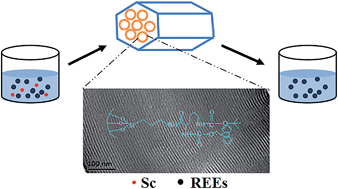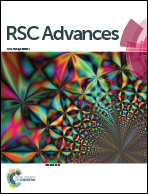Synthesis and characterization of lysine-modified SBA-15 and its selective adsorption of scandium from a solution of rare earth elements
Abstract
A novel lysine-functionalized mesoporous material (Fmoc-SBA-15) was synthesized using a facile two-step post-grafting method to obtain an adsorbent that can selectively adsorb scandium from aqueous solution. The ordered mesoporous structure of the material was confirmed by powder X-ray diffraction (XRD), transmission electron microscopy (TEM) analysis, and N2 adsorption–desorption isotherms. Fourier transform infrared (FT-IR) spectroscopy confirmed that lysine was introduced into SBA-15. Furthermore, the materials showed an excellent scandium adsorption capacity (35.29 mg g−1) at room temperature with a scandium uptake time of <10 min. The adsorption isotherms and uptake kinetics were also investigated. The equilibrium data were better represented by the Freundlich isotherm model than by the Langmuir model. The pseudo-second-order kinetics model best described the adsorption kinetics of scandium ions onto Fmoc-SBA-15. Moreover, the material possessed high selectivity for scandium from a rare earth element solution.


 Please wait while we load your content...
Please wait while we load your content...